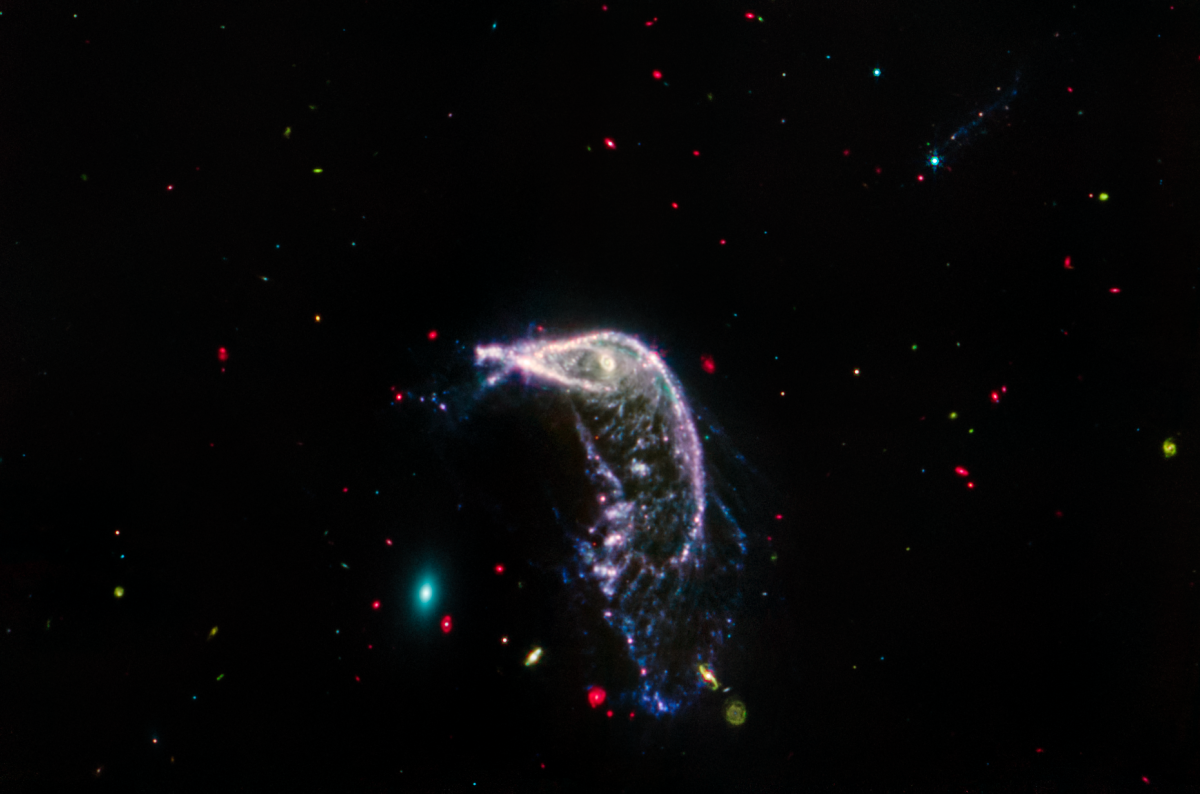The Webb Space Telescope, operated by NASA and the European Space Agency, has captured a breathtaking image of a pair of intertwined galaxies glowing in the infrared spectrum. These galaxies, located 326 million light-years away, are enveloped in a blue haze of stars and gas, creating a mesmerizing celestial scene.
A light-year, equivalent to 5.8 trillion miles, underscores the vast distance of these galaxies from Earth. The release of this image coincides with the second anniversary of Webb’s scientific operations, highlighting the telescope’s significant contributions to astronomy.
Nicknamed “Penguin and the Egg,” the neighboring galaxies have been entangled for tens of millions of years and are destined to eventually merge into a single galaxy, according to NASA. This cosmic interaction mirrors the future of our own Milky Way and the Andromeda Galaxy, which are expected to collide and merge in about 4 billion years.
The Webb Space Telescope is considered the successor to the aging Hubble Space Telescope. As the largest and most powerful astronomical observatory ever launched, Webb was rocketed into space in 2021. After a six-month commissioning period, its first official images were released in July 2022. Positioned 1 million miles (1.6 million kilometers) from Earth, Webb has already transformed our understanding of the universe.
“In just two years, Webb has transformed our view of the universe,” NASA’s Mark Clampin said in a statement, underscoring the telescope’s remarkable achievements and its potential for future discoveries.



